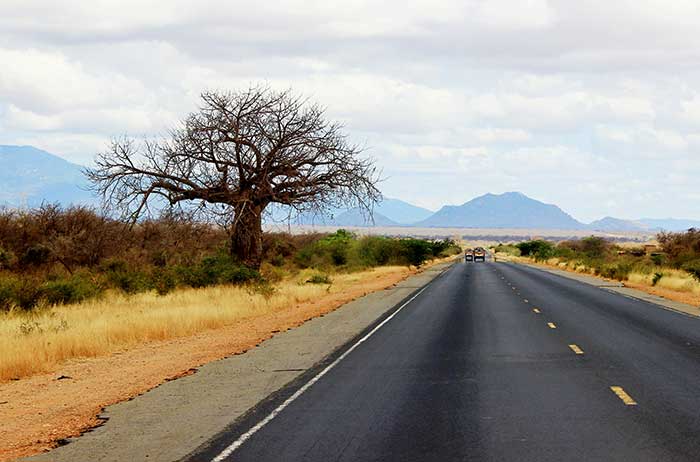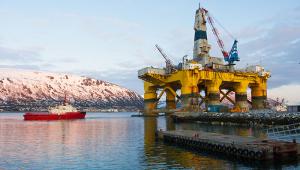web_mainroadkenya_shutterstock_149732558.jpg

A road in Kenya. Image © Shutterstock
Africa has long been plagued by its fragile infrastructure network, something which the pandemic has brought into an even keener focus. The continent’s water, transport and power networks – very much the foundations of a region’s infrastructure – considerably lag behind Europe, the Americas and Asia. The World Bank estimates that more than half of sub-Saharan Africa lacks access to electricity, an illustration of one of the many challenges facing the continent.
That is why large-scale infrastructure programmes have the ability to unlock Africa’s long-term potential. African governments have, to an extent, recognised this, and are increasingly taking infrastructure investment seriously as a driver of economic growth. For instance, last year, the South African government announced plans to utilise R100bn (£5bn) over 10 years to leverage R1trn (£50bn) worth of infrastructure investment.
There has rarely been a lack of private capital to fund projects across the continent, rather investors have typically found there to be a shortage of bankable projects. Weak project planning, regulatory uncertainty and underdeveloped foreign exchange markets are holding projects back and preventing deeper infrastructure value chains from forming. The question that must be asked, therefore, is what can be done, both in the public and private sector, to get Africa’s infrastructure projects moving?
First, efforts must be made to move the focus from discrete infrastructure projects to the entire value chain associated with it. This is particularly prevalent in transport corridors. Without view of reliable routes to market, Africa will always struggle to attract the investment required for long-term growth. Governments and the public sector need to improve the marketability of transport corridor projects. Improving the efficiency of these corridors is a catalyst for trade and provides multiplier effects enjoyed by various sectors within the economy.
A case study of what can be achieved with corridor financing is the Maputo corridor. Spanning Mozambique and South Africa, investments in port infrastructure led to the development of the N4 highway, which has forged productive links to mining towns, driving widespread growth.
“Africa’s infrastructure network has for decades been its Achilles’ heel, but it has the potential to be a driving force in the continent’s economic recovery”
The African Continental Free Trade Area, which came into effect this year, also provides room for optimism. The agreement will make it easier to trade across borders and each dollar spent along a transport value chain can create multiple dollars of economic benefit. The level of buy-in on the agreement from financial institutions, regulators and development bodies has also been encouraging.
Energy supply challenges are another of the continent’s major infrastructure problems. An example of how the private sector is supporting efforts is Starsight Energy, a West African Commercial and Industrial energy provider. The business has made hugely efficient gains across its 547 sites in Nigeria and Ghana. It has utilised its strategic relationship with key Original Equipment Manufacturers to boost optimise energy consumption, increase profitability and cut down on carbon emissions.
We must also consider public-private partnerships (PPPs). PPPs can dramatically help the public sector deliver more streamlined infrastructure and services. For instance, South Africa’s Renewable Energy Independent Power Producer Procurement Programme has helped the country develop its renewable energy capabilities since its introduction in 2011. However, PPPs are complex models and while they are certainly part of the solution, there are areas where they don’t work. Political and regulatory obstacles across the continent are rife and continue to make the continent’s water network particularly difficult to invest in. It is imperative that this model becomes more efficient, and policymakers need to think carefully about how to tailor the model for their market.
There are several high potential corridors of growth which should be prioritised by governments and investors. Many of these lie in East Africa, home to many of the continent’s most buoyant countries. The likes of Ethiopia will contribute meaningfully towards preventing recession across Africa over the next eighteen months. Meanwhile, South Africa should continue to be viewed as a key market and a gateway into Africa, and in West Africa, Ghana, Nigeria and the Ivory Coast represent the region’s most significant investment potential in the medium term.
Africa’s infrastructure network has for decades been its Achilles’ heel, but it has the potential to be a driving force in the continent’s economic recovery. There is widespread consensus that the region’s economic development, both in the short and the long term, should be led by infrastructure development and maintenance. Whilst much work is required to ensure the enabling environments across most markets deliver more bankable projects, there remain a broad range of investment opportunities offering attractive returns. The key lies in harnessing a more productive and efficient relationship between the public and private sector.












